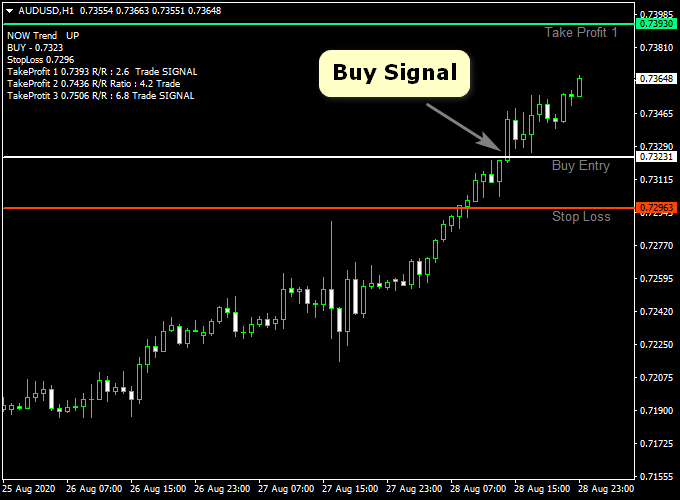
A portfolio investment manager is a job that you might be interested in if your degree goals are different. You can choose from risk management or financial planning degrees. Many employers will prefer employees who have specific skills. To increase your chances of landing a job, you may want take courses in those areas. At minimum, you'll need a bachelors degree. A graduate degree will make you more attractive. A major in accounting, finance or business is a good option if your goal is to enter this field.
Investment strategy
Learn about portfolio management and investment strategy by taking a course. These courses include topics like asset allocation, economic analysis and security selection. They also cover performance analysis. Learn how to communicate with investors and about the investment process. This course is suitable for people who are returning to the investment field after a long career. Here are some additional resources.

Allocation of assets
There are many asset classes that deal with asset selection and valuation. But some programs focus more on the intricate aspects of portfolio creation. Whatever course you choose will teach you about risk measurement and diversification as well how to build an efficient portfolio. These courses are structured in a way that allows students to navigate the various modules in the order they find most useful.
Risk management
Look at risk management when looking for the right courses in portfolio management. In finance, risk management occurs everywhere. Investors may decide to invest in U.S. Treasury securities over corporate bonds, to reduce risk. Fund managers could use derivatives as a way to hedge against currency exposure. Before issuing personal lines of credit, banks frequently conduct credit checks. Stockbrokers may use financial instruments such as options to reduce risk. To manage risks, money managers also use strategies like portfolio diversification and asset allocation.
Expected Return
When choosing an asset or strategy, you must consider the expected return. This measure allows you compare past performance to predict future performance and is an essential component of investment analysis. Diversification is an essential component of portfolio management. It is important to take into account risk when investing. Even though an investment may have a high expected return you should still carefully evaluate the risk and reward.
Development of investment acumen
Portfolio management courses are a great way to improve your investment knowledge and make smart investments. Listed below are five investment objectives that you should consider. These objectives are crucial to your financial success. When considering which investment opportunities to pursue, consider your time horizon, risk tolerance, and investment horizon. These objectives will help you determine how much risk to take while maintaining your desired returns. You'll be a better investor if you incorporate the five objectives in your investment strategy.

Certificate
Whether you are planning to work in the financial industry or simply want to learn more about the field, certification in portfolio management courses is an ideal choice. These courses cover everything from basics and history to asset allocation, financial statements performance measurement and communication. Some courses also offer internships so that you can gain valuable work experience while you study. You may also choose this option to pursue a career change or build your resume.
FAQ
What kinds of investments exist?
There are many types of investments today.
These are the most in-demand:
-
Stocks: Shares of a publicly traded company on a stock-exchange.
-
Bonds are a loan between two parties secured against future earnings.
-
Real estate - Property owned by someone other than the owner.
-
Options – Contracts allow the buyer to choose between buying shares at a fixed rate and purchasing them within a time frame.
-
Commodities: Raw materials such oil, gold, and silver.
-
Precious metals: Gold, silver and platinum.
-
Foreign currencies - Currencies outside of the U.S. dollar.
-
Cash - Money that's deposited into banks.
-
Treasury bills are short-term government debt.
-
Businesses issue commercial paper as debt.
-
Mortgages - Loans made by financial institutions to individuals.
-
Mutual Funds are investment vehicles that pool money of investors and then divide it among various securities.
-
ETFs (Exchange-traded Funds) - ETFs can be described as mutual funds but do not require sales commissions.
-
Index funds - An investment fund that tracks the performance of a particular market sector or group of sectors.
-
Leverage is the use of borrowed money in order to boost returns.
-
Exchange Traded Funds (ETFs) - Exchange-traded funds are a type of mutual fund that trades on an exchange just like any other security.
These funds are great because they provide diversification benefits.
Diversification is the act of investing in multiple types or assets rather than one.
This helps protect you from the loss of one investment.
How do you know when it's time to retire?
The first thing you should think about is how old you want to retire.
Do you have a goal age?
Or would you prefer to live until the end?
Once you have decided on a date, figure out how much money is needed to live comfortably.
Then, determine the income that you need for retirement.
You must also calculate how much money you have left before running out.
How can I invest wisely?
An investment plan should be a part of your daily life. It is vital to understand your goals and the amount of money you must return on your investments.
It is important to consider both the risks and the timeframe in which you wish to accomplish this.
This way, you will be able to determine whether the investment is right for you.
Once you have settled on an investment strategy to pursue, you must stick with it.
It is better to only invest what you can afford.
How can I reduce my risk?
Risk management refers to being aware of possible losses in investing.
An example: A company could go bankrupt and plunge its stock market price.
Or, the economy of a country might collapse, causing its currency to lose value.
You risk losing your entire investment in stocks
Stocks are subject to greater risk than bonds.
You can reduce your risk by purchasing both stocks and bonds.
This increases the chance of making money from both assets.
Another way to minimize risk is to diversify your investments among several asset classes.
Each class has its own set risk and reward.
For instance, while stocks are considered risky, bonds are considered safe.
So, if you are interested in building wealth through stocks, you might want to invest in growth companies.
Saving for retirement is possible if your primary goal is to invest in income-producing assets like bonds.
Statistics
- If your stock drops 10% below its purchase price, you have the opportunity to sell that stock to someone else and still retain 90% of your risk capital. (investopedia.com)
- An important note to remember is that a bond may only net you a 3% return on your money over multiple years. (ruleoneinvesting.com)
- They charge a small fee for portfolio management, generally around 0.25% of your account balance. (nerdwallet.com)
- Most banks offer CDs at a return of less than 2% per year, which is not even enough to keep up with inflation. (ruleoneinvesting.com)
External Links
How To
How to invest into commodities
Investing is the purchase of physical assets such oil fields, mines and plantations. Then, you sell them at higher prices. This is called commodity trading.
Commodity investing works on the principle that a commodity's price rises as demand increases. The price tends to fall when there is less demand for the product.
When you expect the price to rise, you will want to buy it. You don't want to sell anything if the market falls.
There are three main types of commodities investors: speculators (hedging), arbitrageurs (shorthand) and hedgers (shorthand).
A speculator will buy a commodity if he believes the price will rise. He doesn't care whether the price falls. Someone who has gold bullion would be an example. Or someone who is an investor in oil futures.
An investor who invests in a commodity to lower its price is known as a "hedger". Hedging is a way to protect yourself against unexpected changes in the price of your investment. If you own shares in a company that makes widgets, but the price of widgets drops, you might want to hedge your position by shorting (selling) some of those shares. You borrow shares from another person, then you replace them with yours. This will allow you to hope that the price drops enough to cover the difference. When the stock is already falling, shorting shares works well.
A third type is the "arbitrager". Arbitragers trade one thing in order to obtain another. If you're looking to buy coffee beans, you can either purchase direct from farmers or invest in coffee futures. Futures allow you to sell the coffee beans later at a fixed price. Although you are not required to use the coffee beans in any way, you have the option to sell them or keep them.
You can buy things right away and save money later. If you're certain that you'll be buying something in the near future, it is better to get it now than to wait.
But there are risks involved in any type of investing. One risk is the possibility that commodities prices may fall unexpectedly. The second risk is that your investment's value could drop over time. You can reduce these risks by diversifying your portfolio to include many different types of investments.
Taxes are another factor you should consider. When you are planning to sell your investments you should calculate how much tax will be owed on the profits.
If you're going to hold your investments longer than a year, you should also consider capital gains taxes. Capital gains taxes do not apply to profits made after an investment has been held more than 12 consecutive months.
You might get ordinary income instead of capital gain if your investment plans are not to be sustained for a long time. On earnings you earn each fiscal year, ordinary income tax applies.
Investing in commodities can lead to a loss of money within the first few years. You can still make a profit as your portfolio grows.